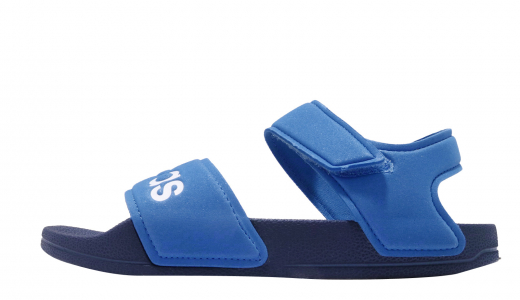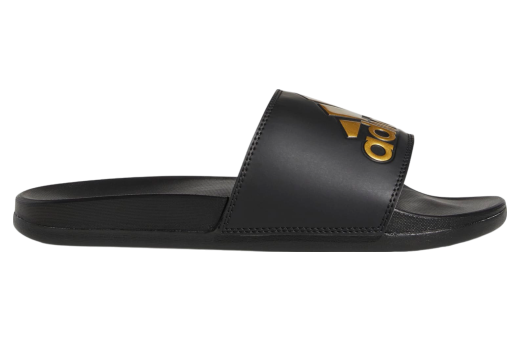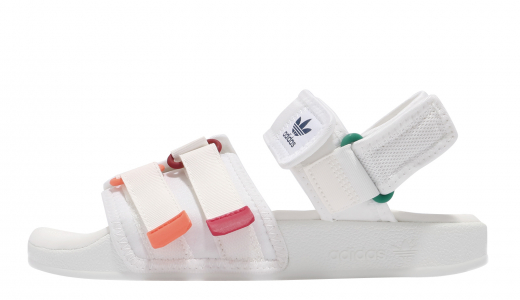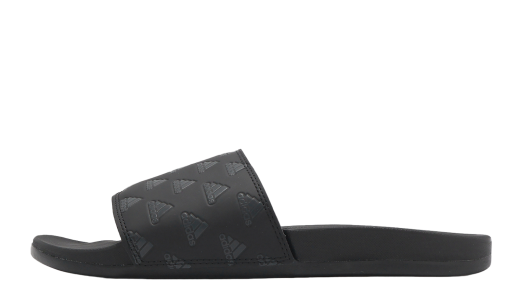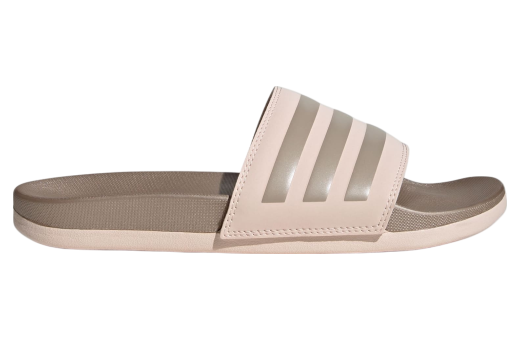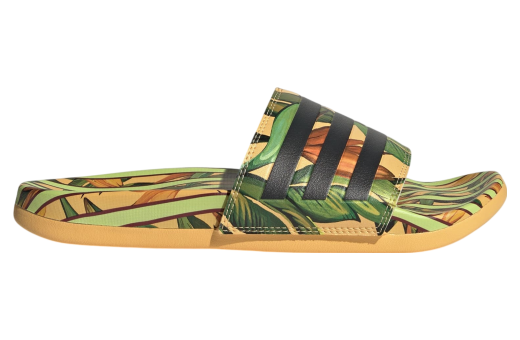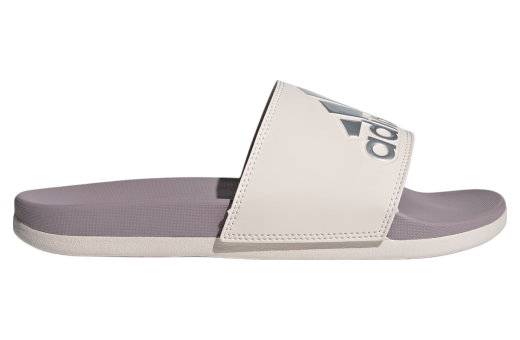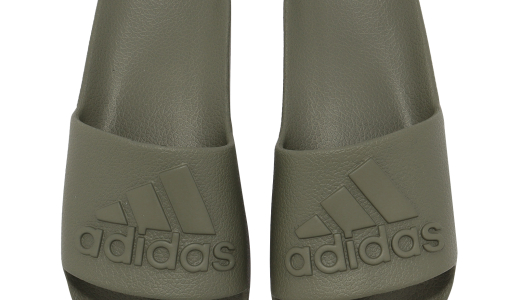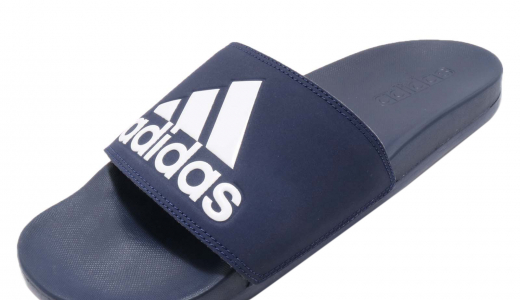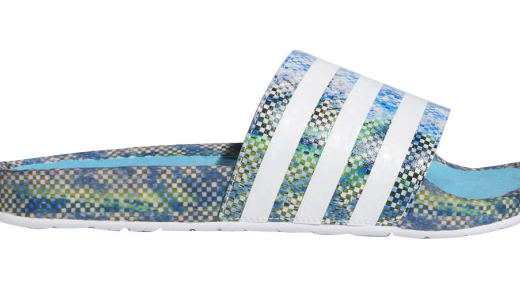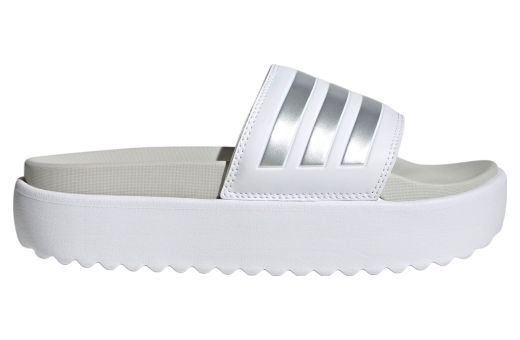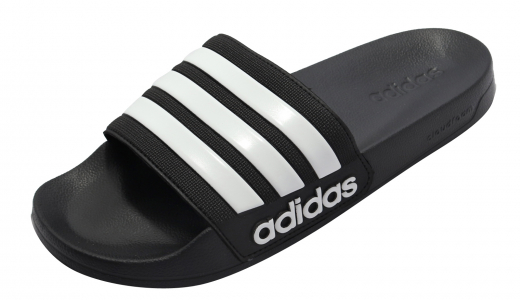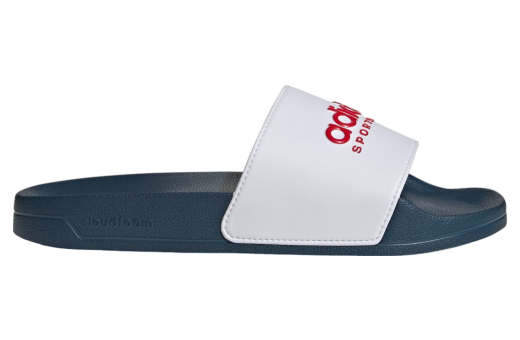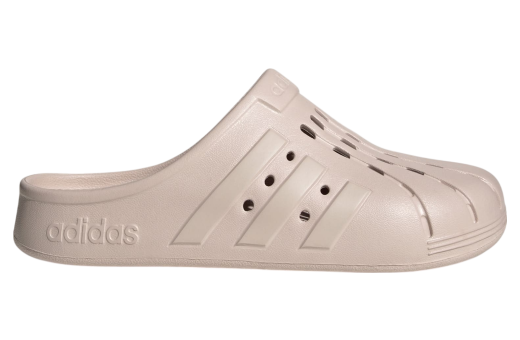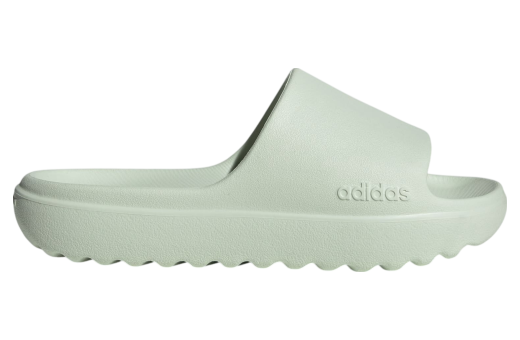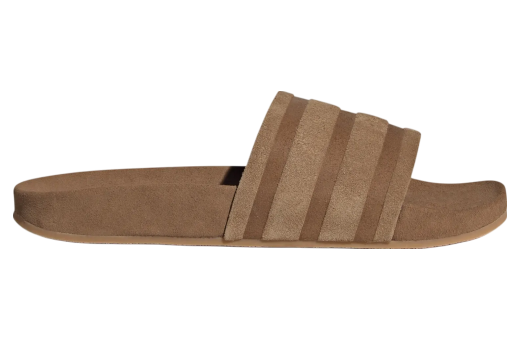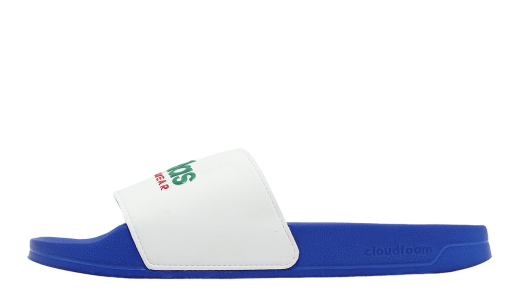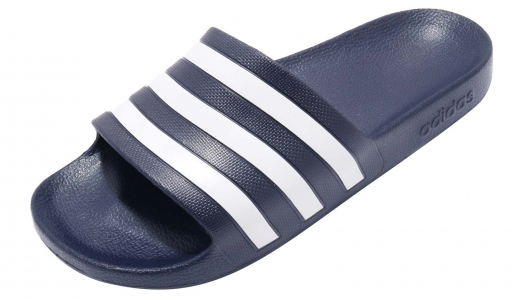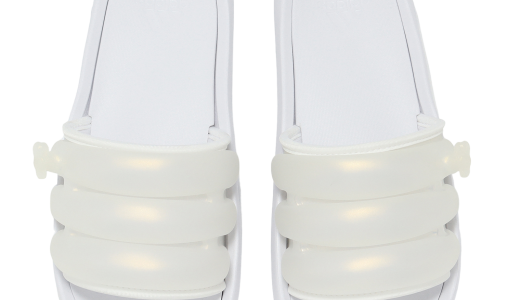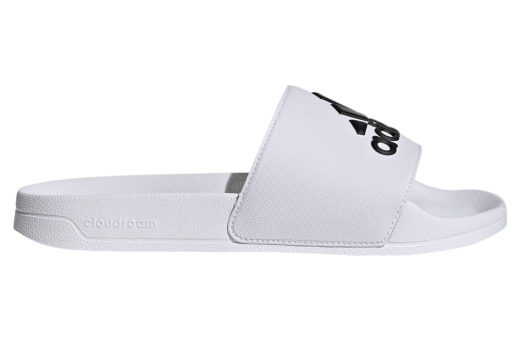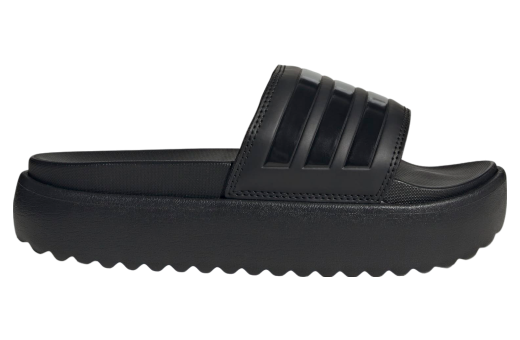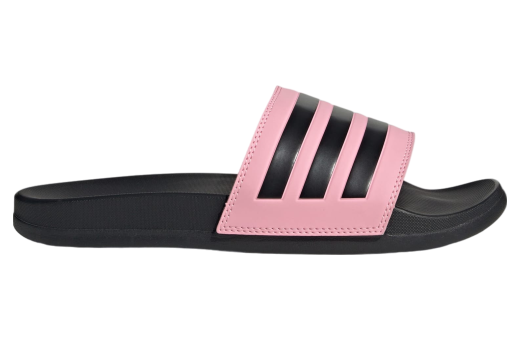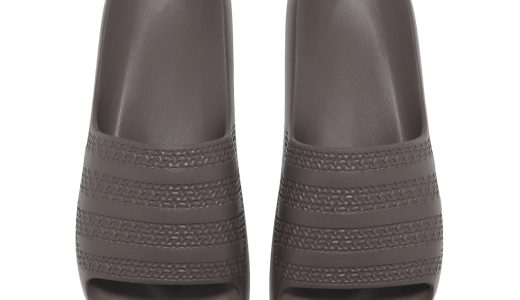Adidas Adilette
The Adidas Adilette is a classic slide sandal that has been a summertime staple since its introduction in 1972. Originally designed as a shower shoe for athletes, the Adilette quickly gained popularity for its simple and practical design. The sandal features a wide synthetic strap with the iconic Adidas three stripes branding, providing a secure and comfortable fit. The strap is typically lined with soft fabric or foam for added comfort, making the Adilette perfect for lounging by the pool or wearing post-workout.
One of the defining features of the Adidas Adilette is its lightweight and durable construction. The sandal is built on a contoured footbed that provides cushioning and support for all-day comfort. The outsole is made from textured rubber, offering reliable traction on various surfaces, whether wet or dry. With its timeless design and practical functionality, the Adidas Adilette has become a favorite among athletes, fashion enthusiasts, and casual wearers alike, making it a true classic in the world of footwear.
History of Adidas Adilette
Adidas Adilette: A Comprehensive History
Adidas, the globally renowned sportswear giant, has a storied history filled with iconic products that have left a lasting impact on both sports and fashion industries worldwide. Among these, few items stand out as both a symbol of casual comfort and athletic utility like the Adidas Adilette. Synonymous with leisure and recognized by millions, the Adilette sandal has grown from a simple poolside accessory to a cultural phenomenon.
I. Origins and Initial Development
The story of the Adidas Adilette begins in the early 1970s. At that time, Adidas was already a well-established name in athletic wear, admired for its innovative products and commitment to performance. Friedrich Dassler, better known as Adi Dassler, founded the brand in 1949. With a legacy of crafting performance-enhancing footwear and accessories, Adidas aimed to expand its portfolio further to address more specific athletic needs.
It was during this era that Adidas identified a gap in the market for a comfortable, easy-to-wear sandal. Sports clubs in Germany and across Europe, particularly those frequented by professional athletes, needed footwear that could be worn in the locker room and around pool areas. Recognizing this need, Adidas set out to design a product that provided comfort, durability, and water resistance.
The result was the Adilette, introduced in 1972. The original Adilette design featured a simple construction: a single-bandage upper made of durable PVC material and a contoured footbed for better ergonomics and comfort. The initial colorway was blue and white, which became iconic over the years. The slip-on design made it easy for athletes to transition from training or competition to relaxation without much hassle.
II. Adoption and Early Popularity
Initially, the Adilette found its primary market among athletes. Its practical benefits were quickly recognized, and it became a staple in the locker rooms of swimming pools, gyms, and sports centers. The shoe's lightweight and waterproof nature made it ideal for these environments.
However, it wasn't long before the Adilette's utility extended beyond professional athletics. College athletes, club sports players, and everyday pool-goers adopted the sandal for its practicality and comfort. This broadened its appeal significantly, and soon, the Adilette was seen not just as a piece of sports equipment, but as casual footwear suitable for a variety of informal settings.
III. Evolution in Design and Expansion
Throughout the 1980s and 1990s, the Adidas Adilette began to see variations in its design. While the original blue and white remained the most iconic, Adidas introduced a range of colors and materials to cater to different tastes and preferences. The contoured footbed persisted, but adjustments in texture and footbed patterns improved grip and comfort.
Marketing strategies evolved as well. The Adilette was no longer exclusively pitched to athletes but was now promoted as lifestyle footwear. Adidas emphasized its comfort, versatility, and the laid-back vibe it provided. This shift in marketing helped the Adilette reach an even wider audience, encapsulating various demographics, from athletes and college students to fashion-conscious individuals and holidaymakers.
IV. Cultural Impact and Collaborations
As the 2000s approached, the Adilette solidified its place in popular culture. Numerous celebrities and athletes were spotted wearing the sandals, further driving their appeal. They began to be associated with a casual, effortless style that could transition from the locker room to the streets seamlessly.
A pivotal moment in the Adilette's history came with the rise of collaborations in fashion. Adidas, seeing the potential to merge sportswear with high fashion, began collaborating with designers, artists, and other brands. The Adilette was an ideal canvas for these collaborations due to its simple yet iconic design. Limited edition Adilettes featuring bold designs, unique textures, and exclusive colorways created a buzz and were highly sought after by fans and collectors.
One of the notable collaborations was with Raf Simons, the celebrated Belgian designer, who brought a high-fashion twist to the humble Adilette. The collaboration maintained the sandal's core design but introduced premium materials and high-end aesthetics, blurring the lines between casual sportswear and luxury fashion. This opened new doors for the Adilette, positioning it not just as comfortable footwear but as a fashion statement.
V. Adaptation to Modern Trends
In the 2010s and 2020s, the Adilette continued to capture the changing tastes and preferences of new generations. The rise of streetwear culture and the growing appreciation for athleisure significantly boosted its popularity. The likes of Kanye West, Pharrell Williams, and other cultural influencers often seen sporting the Adilette helped cement its status in contemporary fashion.
Adidas took note of the trends and began to incorporate modern technologies and eco-friendly materials into the Adilette. Collaborations with sustainable initiatives led to versions of the sandal made with recycled materials, aligning with rising consumer awareness about environmental issues.
Digital marketing and social media played substantial roles in the Adilette's enduring relevance. Instagram, TikTok, and other platforms became conduits through which the Adidas Adilette found audiences far and wide. Hashtags, influencer partnerships, and user-generated content allowed the sandals to maintain a strong presence in the digital age.
VI. Diversification and Special Editions
In response to the growing demand, Adidas diversified the Adilette offerings. Special editions, custom designs, and various iterations became commonplace. Some versions targeted specific markets, such as the Adilette Aqua, optimized for water-based activities, and the Adilette Slides, which introduced new materials and design elements to appeal to a broader audience.
The introduction of bold colors and patterns, customizable features, and special-edition releases allowed consumers to express their personal styles through the Adilette. The company's strategic moves to partner with popular retail chains and online marketplaces ensured that the sandals were accessible to a global audience.
VII. The Adilette in Contemporary Culture
Today, the Adidas Adilette stands as a timeless piece of footwear, revered for its blend of comfort, style, and versatility. It represents the evolution of sportswear into mainstream fashion, a journey marked by strategic foresight and adaptability to cultural shifts.
The Adilette’s significance transcends that of mere footwear. It is a symbol of relaxation, a nod to the importance of downtime in the rigorous lives of athletes, and a mainstream fashion accessory adopted by youth subcultures and high fashion alike. From the original blue and white to the myriad special editions seen today, the essence of the Adilette remains consistent: simplicity, comfort, and enduring style.
VIII. Future Prospects
Looking to the future, the Adidas Adilette appears poised to maintain its iconic status. The continuous blend of classic elements with innovative features ensures that they remain relevant. Future iterations might see even more advanced materials or fully customizable options, while sustainability will likely remain a core focus.
Adidas’ keen understanding of market trends and cultural currents suggests that the Adilette will continue to adapt while staying true to its origins. This adaptability is key to the Adilette's lasting appeal, with the potential to capture the imaginations of new generations while honoring a rich legacy.
In conclusion, the history of the Adidas Adilette is a testament to the power of thoughtful, targeted design and strategic evolution. From a simple athletic sandal to a global fashion staple, the Adilette's journey is a remarkable chapter in Adidas' storied history, showcasing the brand's ability to innovate, adapt, and inspire.
